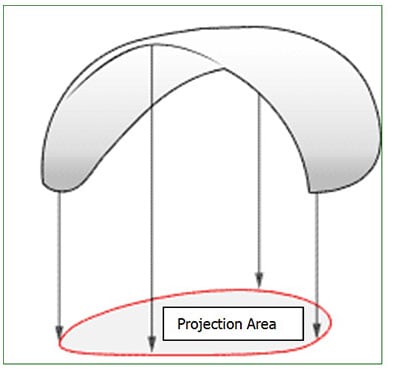January 31, 2012
Today’s subject, while a little technical, is nonetheless very relevant when it comes to outdoor lighting, and most particularly to the structural aspect of it. The concept in question is what we call Effective Projected Area (EPA) and its wind force on objects.


In other words, the EPA is the projected area combined with the appropriate drag coefficient. What needs to be mentioned here is that depending on the shape of the object, the drag coefficient will vary. The drag coefficient can be defined as the resistance created by the object or shape in a fluid environment, in our case (outdoor lighting) air. And the lower the drag coefficient, the least resistance the object will create. An example is often the best way to understand a technical concept such as this one. Let’s take two basic forms, a round surface object (drag coefficient of 0.5 according to the latest version of AASHTO LTS-5 table 3-6) and a rectangular flat shape object (drag coefficient of 1.2 according to the latest version of AASHTO LTS-5 table 3-6). For the very same area, the rectangular object will create around 60 % more resistance than the round object. This kind of information is needed in order to calculate the wind force acting on an object but also on the overall structure. It is only by knowing the EPA value for each object and their respective weight that the proper pole can be calculated and designed accordingly.
The wind force acting on an object is calculated by multiplying the EPA and the velocity pressure of the wind (this designed wind pressure is computed in accordance with a specific standard. In our case, we use the equation 3-1 in AASHTO Standard specifications for structural supports for highway signs, luminaires and traffic signals). These designed wind pressures are usually based on 50 years’ studies or other methods, depending on the standard used.
Another detail important to mention is that the use of the proper wind speed, or wind pressure, should not be taken lightly since in some cases, the force projected by the wind on an object can be many times the value of its weight. A perfect example to understand this is a banner. This kind of object is extremely light, about 25 to 30 lbs; but depending on its size and its geographical location (wind pressure or wind speed), the object in question can create in some cases more than 400 lbs of force. In such cases, Lumec by Signify strongly recommends that a qualified professional be consulted for the proper design and selection of poles and foundations.

November 14, 2023
How lighting technology can help reduce risks to migrating birds